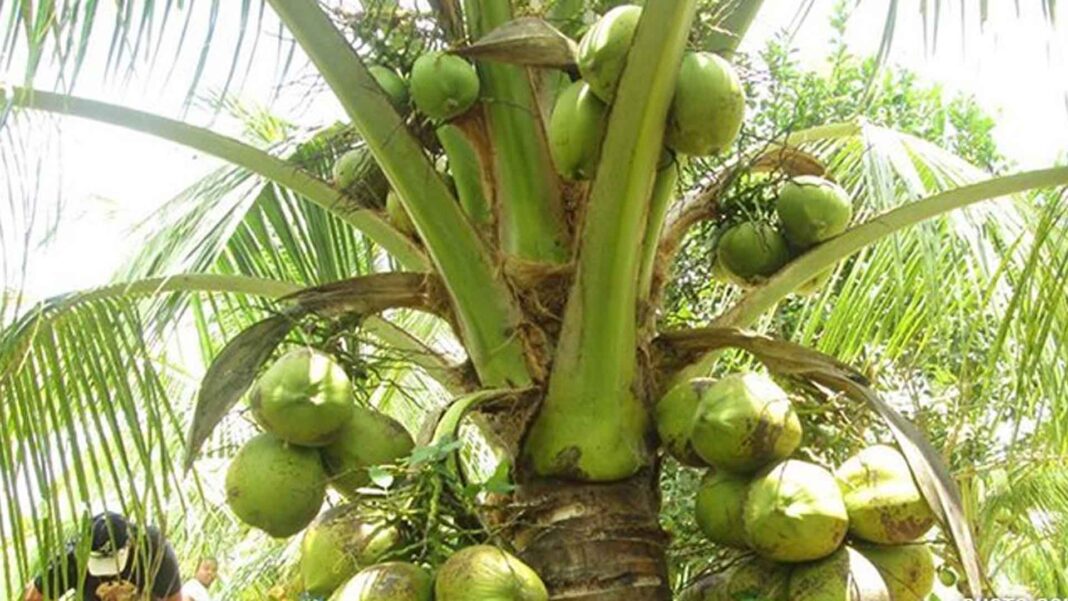President Ferdinand R. Marcos Jr. has directed the Philippine Coconut Authority (PCA) to craft a concrete plan for the development and rehabilitation of the coconut industry, as it intends to plant 100 million trees in the next five years.
Marcos gave the directive when he met with PCA officials at Malacañan Palace in Manila on Wednesday, Presidential Communications Office (PCO) Secretary Cheloy Garafil said in a statement on Thursday.
Garafil said Marcos was briefed about the PCA’s proposed Coconut Planting and Replanting Project that aims to reinvigorate the coconut industry by planting 100 million trees from 2023 to 2028.
In coming up with a general plan for the coconut sector, the President emphasized the importance of getting the industry leaders’ input and implementing such initiative beyond his term as president.
“There’s a big opportunity, so let’s have a look at that so that we can show even just for ourselves. Kailangan natin mayroon tayong plano (We need to have a plan),” he told PCA officials, as quoted by the PCO.
“Hindi puwedeng basta’t ito gagawa… Kailangan maliwanag ‘yung plano. Tiyakin natin na talagang ginamit natin sa tama (It cannot just be done… The plan needs to be clear. Let’s make sure we use it correctly).”
Under the proposed massive coconut planting and replanting program, the PCA targets to plant 20 million to 25 million trees annually from 2023 to 2028, or 100 million trees in total.
Marcos told the PCA not to focus on “political terms,” noting that the project must be continued even after his presidency, if necessary.
“Why will we stop (in) 2028. Because I’m finished? Huwag nating isipin ‘yun (Let’s not think that way). What is the ideal? How many years do we need to take to rehabilitate the coconut industry?” he said.
Garafil said the PCA is recommending the issuance of a memorandum circular that would direct concerned national government agencies and instrumentalities and urge local government units (LGUs) to support the coconut planting and replanting project.
Citing a memorandum of agreement between the PCA and coconut-producing provinces and municipalities, she said the LGUs would be encouraged to implement coconut planting and replanting, seed farm development and coconut fertilization, among other activities.
“The PCA has launched a massive coconut planting program to address the impact of senilities and the typhoon destruction to the sector, noting that the last time the Philippines implemented a massive coconut planting program was in the ‘70s or ‘80s,” Garafil said.
“Due to budgetary constraints, the agency has only managed to plant or replant about 1 (million) to 3 million coconut trees, which is far from the estimated 34 million trees that it needs to replant. The PCA said in order to plant 100 million trees in the next five years, a whole-of-nation approach is needed.”
The proposed Massive Coconut Planting and Replanting Project 2023-2028 seeks to develop strategies in post-harvest, processing and marketing interventions under the Coconut Farmers and Industry Development Plan.
It also aims to meet the strong local and international demand for coconut products, as well as to maximize the benefits of the coconut industry to the economy and welfare of Filipino coconut farmers.
The Philippines has a total area of 3.6 million hectares planted with coconut trees or about 27 percent of total agricultural land. It has 340.6 million coconut-bearing trees capable of producing 14 billion to 15 billion nuts annually.
Last year, the Philippine Statistics Authority (PSA) recorded 340.6 million bearing trees, a 6.2 million decline from the 346.8 million bearing trees the year before.
The PCA said the challenges confronting the sector include increasing tree senility, bearing tree losses due to pests and diseases, natural disasters and climate change impact.
The agency is planning to strengthen the project in the next 10 years to 15 years to further rehabilitate the coconut industry, which has been in a state of decline during the past decade due to the negative effects of climate change and natural disasters.
From 15.86 million metric tons (MMT) of coconut in 2012, coconut production in the country fell to 13.83 MMT in 2016 before rising to 14.73 MMT in 2018, and 14.93 MMT in 2022.
Despite recent developments, the country remains the top exporter of coconut products in the world, recording a total export revenue amounting to USD3.22 billion in 2022.
Coconut exports contributed an average of 35 percent to the country’s total agricultural export earnings from 2013 to 2022. (PNA)



















